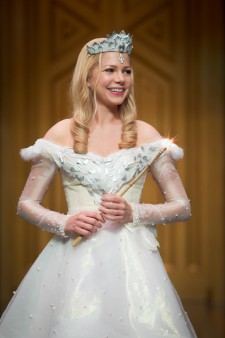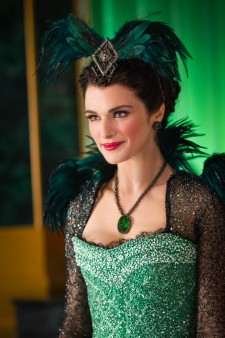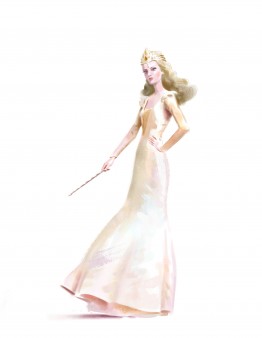Ahead of the forthcoming release of Oz the Great and Powerful on Blu-ray and Blu-ray 3D Disney has made available this cool slideshow feature highlighting the work behind the intricate costume designs in the film. Check out this slideshow and read this interesting article we’ve been provided to find out more.
GARY JONES AND MICHAEL KUTSCHE COSTUME THE FANTASTICAL CHARACTERS OF
“OZ THE GREAT AND POWERFUL”
Costume designers Gary Jones and Michael Kutsche designed, created and assembled nearly 2,000 costumes for “Oz The Great and Powerful.” Working on all sorts of characters from Witches to Munchkins to Quadlings and Tinkers, the two costume designers came up with special looks for all the fascinating and unique inhabitants of the Land of Oz.
But industry veteran Gary Jones is not a stranger to the costume demands of big films. He reunited with director Sam Raimi for “Oz The Great and Powerful,” after having designed the wardrobe for Raimi’s “Spider-Man 2.” In addition to his continuing association with Raimi, Jones has enjoyed collaborations with such distinguished filmmakers as Garry Marshall (seven films, including “Valentine’s Day” “New Year’s Eve,” The Other Sister,” “The Princess Diaries,” ”The Princess Diaries 2: Royal Engagement,” ”Raising Helen” and “Georgia Rule”), Brian De Palma (“Dressed to Kill”), Louis Malle (“Vanya on 42nd Street”), Sidney Lumet (“Guilty As Sin,” “A Stranger Among Us”), Peter Weir (“The Mosquito Coast”) and Alan J. Pakula (“Consenting Adults”).
Costume and character designer Michael Kutsche is an award-winning German artist who works both in traditional and digital media. Kutsche’s unique approach to imaginative character creation led him to become a character designer for Tim Burton’s “Alice in Wonderland,” his first movie experience. Kutsche has since designed characters for Disney’s “John Carter,” directed by Andrew Stanton, and “Thor,” directed by Kenneth Branagh, as well as “Robopocalypse,” directed by Steven Spielberg.
Director Sam Raimi discovered Kutsche’s outstanding costume design skills while he was originating characters for the film. Kutsche’s extraordinary talent and approach to the film’s wardrobe led to his additional collaboration as one of the project’s two costume designers.
“Michael’s drawings depicted characters in their costumes playing a moment from the picture, and they were fantastic,” praises director Sam Raimi. “Right off the bat, he had a vision for the picture that fit in with Robert’s environment. Like Robert, he’s a visionary and his characters really sprang to life out of those drawings.”
Kutsche tasked himself with reflecting the environment of the characters in the costumes he designed for “Oz The Great and Powerful.” He took inspiration from the sets designed by production designer Robert Stromberg. “I think that the most important thing for me was that the costumes weren’t just floating over, but actually part of this world,” comments Kutsche. “Rob’s [Stromberg] drawings and the drawings from the Art Department really were a great starting point because they already had put some very distinct language into them.”
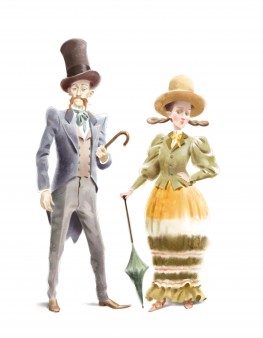
Gary Jones and Kutsche had several discussions about the costume drawings and what materials the costumes could ultimately be made of. Kutsche had very clear ideas about how he wanted to portray the characters and what specificity there would be to their costumes. It was up to Jones to flesh these ideas out literally and figuratively. About the process, Jones says, “In many cases, Michael’s drawings did dictate what the feeling needed to be, but we had to go on a real search to find the right element and the way to do it. That was a great adventure.
“We eventually printed fabrics, beaded fabrics and manipulated fabrics to make it individual and different. Although many of the things are not literally different, they appear to be. So, that’s kind of exciting,” he concludes.
OUTFITTING OSCAR DIGGS aka Oz
Costume designer Gary Jones worked closely with both director Sam Raimi and actor James Franco to conceive the look of Oscar Diggs aka Oz, saying, “In preparing Oz’s clothes, Sam had a very clear idea what he wanted. I had met with James as well, and we were all heading in the same direction, which was terrific.”
Jones’ research for Franco’s tailoring took him on a journey that had nostalgic meaning for the veteran costumer, who has a history with Ringling Bros. “Our story begins in a circus, which is the most period-accurate part of the film,” the longtime designer says. “We researched everything from the largest circus to the poorest, most downtrodden carnival entertainers from the turn-of-the-century to the Dust Bowl. We covered the period between 1880-1930 in our research. Having worked with the Ringling Bros. circus was an added joy because I loved that experience. So, to have another moment with a circus was really terrific for me.”
With inspiration and some vintage photos in hand, Jones met actor James Franco in a SoHo coffee shop in New York, where he shared the photos he had brought from the turn-of-the-century. Some were of Alexander Graham Bell, some of the Wright Brothers—all people that L. Frank Baum had admired.
“Those were things that we started with and that’s how we got to Oz’s final wardrobe design—a black cutaway suit from the turn-of-the-century, which I am very proud to have designed,” Jones concludes.
Franco, commenting on his costume, says, “I only have one look in this film, a three-piece suit that Oz wears in Kansas. I think it’s safe to say that that was my favorite outfit in the film! Knowing that people dressed really well in the old days, I enjoyed wearing that three-piece suit quite a bit.”
THE WITCHES’ WARDROBES
There are three very distinct witches in the film, Evanora, Theodora and Glinda, who had to be costumed to reflect not only their personalities but their surroundings as well.
In creating the look of the sisters Evanora and Theodora, Kutsche says, “I could make a fresh start with the characters by looking at Rob’s [Stromberg] work and how he imagined the world of Oz. I used this to inform the costumes because there was a certain logic to his designs that I wanted to reflect in my illustrations.”
“For Evanora, the ruler of Emerald City, the starting point was looking at the architecture of the city,” Kutsche says. “I really wanted her to not just be some person in this place, but to actually be this place. The shape and color of her wardrobe actually reflect the architecture and feel of Emerald City, which was Art Deco inspired. So, by resembling and reflecting that, I could make her more of a mighty being that stands out against all the other citizens, and the other witches as well.”
Commenting on the costume for her character Evanora, Rachel Weisz says, “I wear a green dress pretty much all the time. It is slightly militaristic, because I’m sort of the military leader of Emerald City, as well.”
Once Kutsche had sculpted the characters’ looks in a two-dimensional sketch, costumer Jones began his process of bringing the illustrations to life with the chosen fabrics. “With Evanora, we took a little detour towards the Duchess of Windsor for a moment, and then came back to Michael’s drawings because of the iconic silhouette that you need to balance the sets and scenery,” comments Jones.
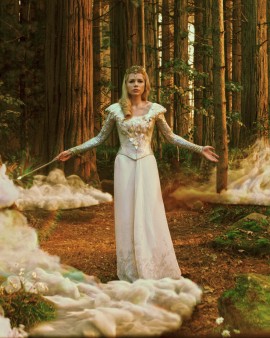
Michelle Williams liked the transitions that Glinda’s costuming took during the course of the story. She says, “When we first meet Glinda, she’s more demure, cloaked in these very delicate fabrics. Then, as the battle dawns, she has a wardrobe change and appropriately suits up in something that is tougher, like fairy-princess armor.”
When we first meet Evanora’s little sister, the bewitchingly beautiful and vulnerable Theodora, she is wearing a Victorian-styled riding outfit, with a large-brimmed red velvet hat that Kutsche devised when he sat down to give life to the character in his concept sketch.
“Theodora in her riding outfit is how we first meet her in the film,” Kutsche says. “There was a little inscription in the script about her wearing pants and having a white blouse. Other than that, I could work freely on the character’s look.”
“It’s in a fantasy world while still being a period piece in a way,” the illustrator/designer offers. “So, I looked at fashion around 1900 when they had some pretty crazy hats. Theodora’s look is almost like a patchwork of different periods that makes it look like no distinct period. And that’s what I guess gives it this slightly fantastical feel.”
In comparing the sister witches Evanora and Theodora, costume designer Jones states that “one of the first times that the characters appeared together, you realize that they do have similarities in the cut of their clothes, but not at all in the feeling of the clothes. They’re two completely different worlds. Mila’s Theodora is a little more on the sporty, physical side, while Rachel’s costumes for Evanora are a little more of a reigning empress.”
“Theodora has three costume changes,” Jones states. “The first one is the riding costume which is when we first meet her. In my opinion, a beautiful costume, beautifully structured with a hint of contemporary pizzazz. A big, handsome velvet riding hat, a red coat, black riding breeches and a white blouse. All very beautiful with a sense of the pastoral fun of the eighteenth century one might find in a Fragonard painting.”
“The character goes through transformations with her costumes,” Mila Kunis remarks. “When you meet her, she’s very demure, very quiet, very sweet. She falls in love with Oscar and when you next see her, she’s in this big, beautiful ball gown.”
DRESSING THE DENIZENS OF OZ
In addition to the principal cast, Jones and his staff of 60 costumers, seamstresses, textile artists, dyers and agers also created the clothes for all the diverse inhabitants of Oz, such as Quadlings, Munchkins, Tinkers, Emerald City citizens and Winkies.
In devising the shape and color palette to best reflect and define these assorted Ozians (most of whom were extras with no dialogue), Gary Jones chose to characterize the mood of these divergent groups through their clothing. Before putting thread to needle or dye to fabric, the Oscar®-nominated designer and his key collaborators (assistant designers Jessica Peel-Scott and Gali Noy and wardrobe supervisor John Casey) spent hours researching fashion trends from various periods. As Jones explains, “We needed to create the world that these characters live in, much as Robert Stromberg did with his sets.”
“While our research was concentrated on the turn of the 20th century,” Jones relates, “our costume designs came from both that historical point-of-view while reflecting a more contemporary style, a fashion point-of-view having to do with what our eye sees today, in 2013, as fashionable and attractive.”
In Glinda’s world, that of the Quadlings and Munchkins, these are the happy people of Oz,” Jones states in describing the mood of the inhabitants and how that guided his choice of wardrobe colors. “They’re butchers, bakers, and the like, who toil in the normal ways of life. A rather happy, simple group of folks, who we defined with bright colors and pretty clothes. To contrast that, in Emerald City, we’re faced with people who are doing work under duress, under the thumb of the wicked Evanora.”
“Therefore a little more repressed, more buttoned up,” he continues. “So, we made their clothes in strong, jewel-tone colors [rich reds and greens and blues] but in a very formal and stylized way. Of course, with a little hint of extra green because of Emerald City. And the more ominous blacks and grays as well to portray that repressed mood. They have some of the same shapes that the people who live in Glinda’s world do, but they’re more conservative in every way. The people who live in Glinda’s world are all in pale pastels, earth tones, cream colors. Even their shoes and hats.”
As for the Winkies, “They are the guards at the palace in Emerald City,” Jones describes. “They work for Evanora, one of the evil people in our movie. Their military-styled costumes were inspired by Russian and Prussian uniforms.
“All the Winkie outfits were made for people who are six-foot-nine or taller,” Jones adds. “So, we had an army of 50 people who were around seven-feet tall. And, if seven-feet tall was not enough, Sam wanted us to enhance these soldiers by adding approximately another eighteen to twenty inches in height with feathered hats. They’re also Prussian in feeling and were made from felt, wool and black, iridescent feathers.”
COSTUMES AND THE FILM
With creativity and imagination, Gary Jones and Michael Kutsche created the costumes for “Oz The Great and Powerful” with each individual character in mind, whether they were main characters or extras. There is no replica of the look of one character to another. This attention to detail also flowed down to makeup and hair design where the teams worked closely with the costumers to capture the unique look of each character.
When audiences see “Oz The Great and Powerful” they may not notice the smallest costuming details, or the seamlessness with which the characters fit in their surroundings or the fact that character looks aren’t duplicated, but they will feel that the Land of Oz is a living, breathing place that as fantastical as it seems, somehow feels as though it may exist. And Jones and Kutsche’s costumes play a great part in delivering that feeling.
ABOUT THE MOVIE
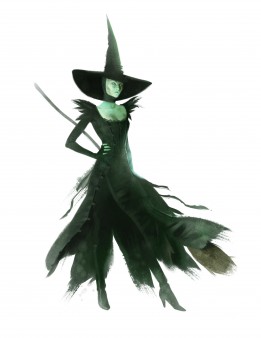
“Oz The Great and Powerful” is produced by Joe Roth, with screen story by Mitchell Kapner and screenplay by Mitchell Kapner and David Lindsay-Abaire. Grant Curtis, Palak Patel, Josh Donen and Philip Steuer are serving as executive producers. “Oz The Great and Powerful” releases on Blu-ray Combo Pack on June 11th.
[amazon-product]B00C7JG0KG[/amazon-product]
[amazon-product]B00C5W3SBE[/amazon-product]


